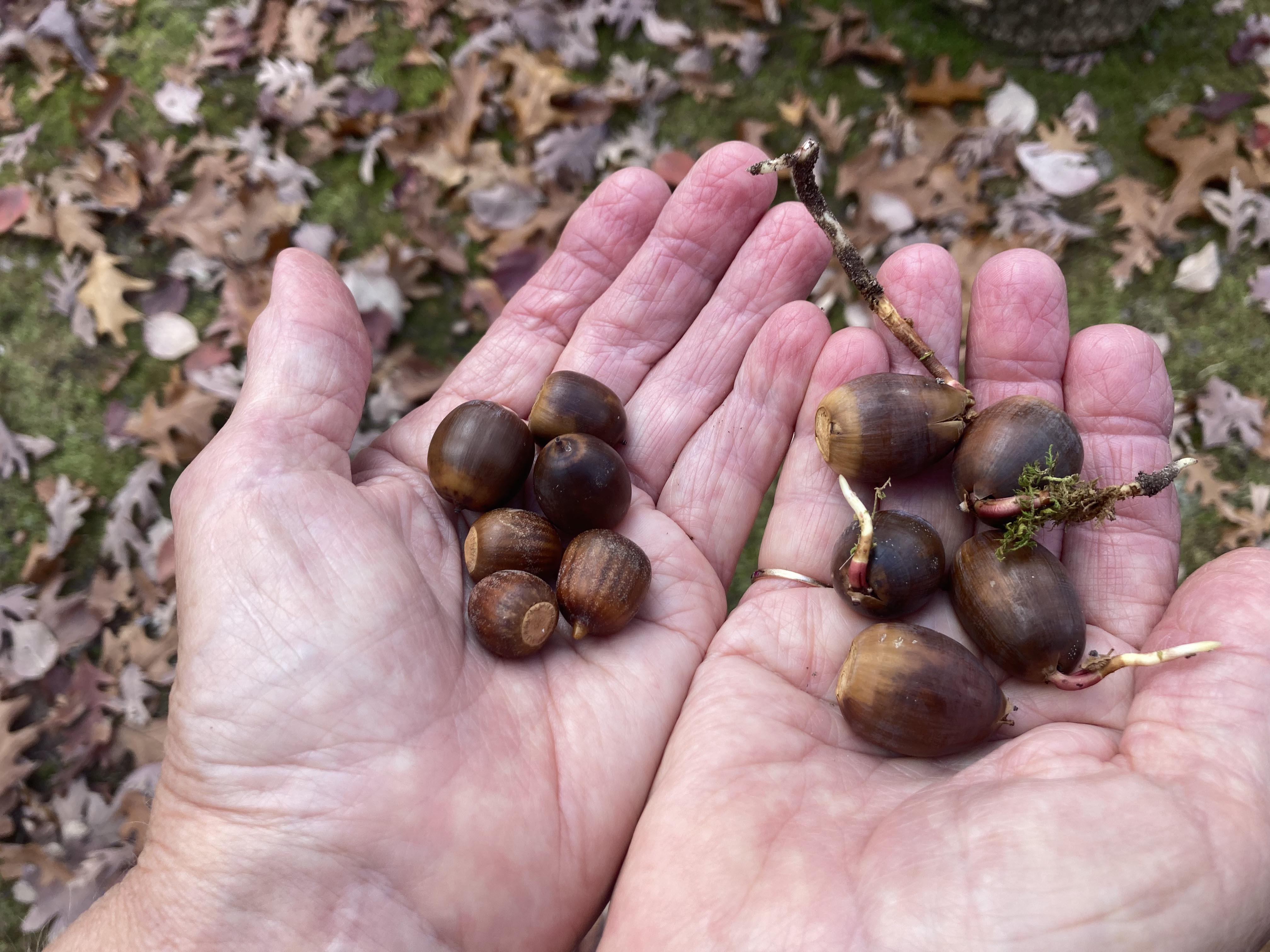Acorns Galore
Contact
University of Arkansas System Division of Agriculture
Cooperative Extension Service
2301 S. University Ave.
Little Rock, AR 72204

Acorns Galore
A few nights ago a storm blew through and I thought it was hailing. Not so, the post oak above the house was just being shaken enough to let loose a good crop of acorns. While my survey results are a bit sketchy, it seems that this is a good mast year for white oaks and an average one for red oaks.
In the Ozarks this seems to be a good masting year, at least as far as oaks are concerned. But hickory nuts are harder to find. Mast, an Old English word derived from Proto-Germanic word “maest,” refers to the nuts or acorns produced in the forest that provide food for wildlife. In its original form it refers to “most or a lot of,” whereas the mast of a ship refers to a rod or pole.
Seed production in trees is seldom consistent from year to year. Orchard grown pecans, for example, are notoriously for having heavy crops one year and then light crop the next. The same happens in the forest but the heavy masting years may be from two to five years apart. A heavy nut or acorn crop will deplete the stored food reserves of a tree and reduce flower bud formation for the following season. An especially heavy fruiting crop may delay flower bud formation for more than one year.
And then there is the weather. Severe droughts, late freezes, and all manner of other insults can reduce or increase the likelihood of the forest producing a good mast crop. These cycles of feast or famine are reflected in the wildlife – the deer, wild hogs, bears, squirrels, turkeys and the like – numbers that depend on them.
Oaks are divided into two distinct groups, the white oaks and the red oaks. The white oak group – with about a dozen species in Arkansas – have rounded leaf lobes, the inside of their acorn cap is hairless, and their acorns form in just one growing season. Also, they have a lower tannin content, making them more palatable to deer and hogs because the higher tannins found in red oak acorns makes them very bitter.
Red oaks – numbering around 20 species in the state – have pointed leaf lobes, the insides of the acorn caps are hairy and the acorns require two years to mature. Because red oaks and white oaks produce acorns on different timelines, the environmental impact on acorn production is somewhat mitigated so usually there will be some acorns added to the mast production each year.
Oaks produce more nut biomass than all of our other native nut producing species combined. With this abundance, it is somewhat surprising that humankind never really developed much of a hankering for acorns; some species are very high in oils, proteins and especially carbohydrates. The reason is all those nasty tannins – so named because they were used to turn shoe leather brown during the tanning process.
While white oaks have fewer tannins than the red oaks, they still have a lot that must be leached out of the acorn before it can be ground into flour. One foodie found it took five water changes – with the extracted acorn kernels boiled until the water darkened. Cultures from around the world have used acorns for food in the past but the work involved in eating them made the easier-to-process grain crops better choices as civilizations developed.
Another difference between the red and white oaks is that white oaks begin the germination process in the fall by sending down a taproot, sometimes reaching a depth of 10 inches before cold weather shuts down growth. This taproot, or “radicle,” as it is called in germinating seeds, lacks any form of dormancy and emerges as soon as it falls to the ground (provided there is sufficient soil moisture). In seeds with this type of dormancy (called epicotyl dormancy) the shoot will not begin to grow until the seed has received two to three months of stratification chilling (temperatures around 40 degrees F). Red oak acorns have complete dormancy and neither the radicle nor the plumule will emerge from the seed until it has received sufficient winter chilling.
I keep eyeing all those acorns on the ground and wonder if maybe I should try to make some acorn flatbread. I’ll think on it but suspect that as much trouble as I’ve had using almond flour, acorn flour will probably be even harder to use.
